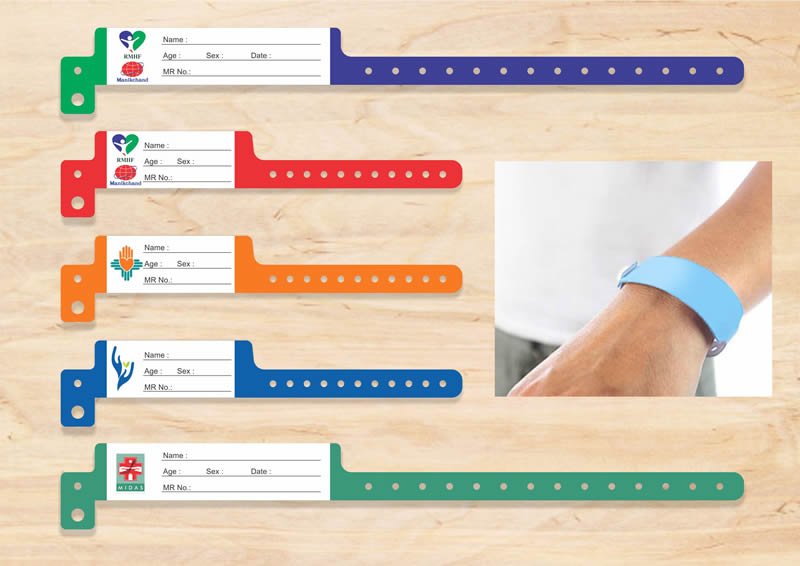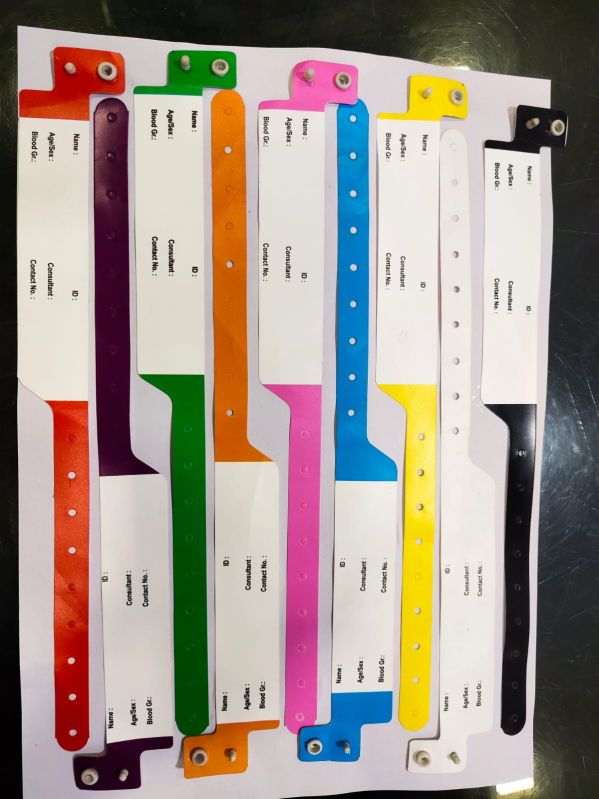Discovering the Different Sorts Of Patient Identification Band Made Use Of in Clinical Facilities
In the detailed world of health care, the important function of Patient Identification bands typically goes undetected. These bands, differing from basic paper wristbands to advanced RFID bands, create the foundation of Patient safety methods, guaranteeing precision in Patient Identification. The large diversity of these bands, each with its distinct benefits and restrictions, is commonly neglected. As we navigate through this topic, one may gain understanding into the subtle intricacies and vital value of such bands in clinical centers.
Recognizing the Relevance of Patient Identification Bands
While they may feel like simple accessories, Patient Identification bands play a vital function in medical facilities. These bands act as a vital device for validating Patient identity, preventing medical errors connected to misidentification. The bands normally show vital details such as the Patient's name, age, blood group, and any well-known allergic reactions. They allow healthcare professionals to rapidly access this vital details, consequently promoting prompt and exact clinical therapy. Patient Identification bands likewise help in simplifying management tasks, making sure accurate record-keeping and invoicing. Regardless of their simpleness, these bands embody the concept of Patient safety and security, a cornerstone of quality health care. Without them, the threat of clinical errors, and as a result, Patient damage, could considerably boost.
Traditional Paper Wristbands: Their Usage and Limitations
Conventional paper wristbands have been a staple in Patient Identification throughout different clinical facilities. While their use is extensive, they harbor particular restrictions that might affect their performance in Patient administration. This section will concentrate on the extent of their application and the integral disadvantages connected with their use.
Paper Wristbands: Usage Scope
In the realm of Patient Identification, paper wristbands have long held a crucial role. These bands are usually made use of in outpatient setups, where the Patient's keep is temporary. In spite of developments in innovation, the modest paper wristband continues to be a reliable and affordable remedy for Patient Identification in various healthcare scenarios.
Limitations of Paper Wristbands
In spite of their extensive use, paper wristbands are not without their drawbacks. In enhancement, paper wristbands frequently lack the technological capacities of even more modern-day choices, such as barcoding or RFID chips, restricting their capability to simply displaying composed details. Paper wristbands can cause pain or skin irritation to some individuals, especially when worn for prolonged periods.
Barcoded Wristbands: Advancements in Patient Identification
While Patient Identification has long been an important aspect of health care, the advent of barcoded wristbands symbolizes a significant jump forward. These bands utilize the simplicity of barcoding innovation, enabling Patient info to be promptly scanned and accessed. They improve the rate and accuracy of Patient Identification, lowering the risk of medical errors connected to misidentification. Barcoded wristbands are economical, easy to produce, and get rid of handwriting mistakes usual with manual systems. They are not without limitations. While they supply renovations over traditional bands, the barcode can end up being used or smudged, providing it unreadable. Regardless of this, barcoded wristbands remain an important device in modern healthcare setups, representing the intersection of technology and Patient treatment.
Radio Frequency Identification (RFID) Bands: an Action In The Direction Of Futuristic Medical Care
The development of Patient Identification bands has actually produced the emergence of Radio Regularity Identification (RFID) Bands (patient identification band). These ingenious gadgets existing vital benefits for healthcare facilities, offering an extra effective and technically advanced ways of Patient Identification. The execution of RFID in health care is a considerable step in the direction of a much more futuristic technique to Patient administration and safety and security
Understanding RFID Bands

RFID Bands: Secret Advantages
Welcoming a future where modern technology and healthcare merge, superhigh frequency Identification bands supply numerous crucial advantages. Mainly, these bands improve Patient safety by providing accurate, rapid Identification, thus decreasing medical mistakes. RFID bands can keep a large quantity of Patient information, consisting of medical background and allergic reactions, allowing personalized treatment. They likewise streamline management tasks, as the automated data entrance replaces hands-on procedures, boosting performance and minimizing paperwork. RFID bands use real-time tracking of people, vital in high-risk atmospheres such as surgical treatment or extensive treatment. Last but not least, these bands are durable and immune to ecological variables, making certain regular functionality. Overall, RFID bands represent a substantial development in Patient Identification technology, profiting both people and healthcare companies.
Implementing RFID in Healthcare
As we browse around here step into a highly advanced period, the execution of RFID bands in medical care comes to be progressively essential. These bands supply a seamless means to track and determine individuals, guaranteeing their safety and security and improving efficiency in treatment procedures. RFID bands provide numerous advantages over standard Identification approaches. They can store a large quantity of data, including the Patient's case history and treatment plans, which can be conveniently accessed by doctor. This data assists physicians make informed choices relating to the Patient's therapy plan. RFID bands minimize clinical mistakes by providing accurate Patient Identification, which is essential in protecting against misdiagnosis or incorrect medicine administration. Therefore, the execution of RFID bands is a considerable step in the direction of boosting Patient safety and healthcare distribution.

Color-Coded Wristbands: Assisting in Quick and Accurate Medical Diagnosis
In the busy setting of a medical center, color-coded wristbands have arised as crucial devices for swift and accurate Identification of a patient's medical problem. These wristbands, worn by individuals, lug particular shades that correspond to different clinical conditions or statuses. This system is created to offer immediate visual hints to healthcare carriers, enhancing Patient security and care high quality.
Approaches for Reliable Execution and Monitoring of Patient ID Bands
Achieving optimum use of Patient Identification bands necessitates a well-structured approach for their implementation and administration. Patient education and learning is likewise important; clients have to comprehend the purpose of the bands and the requirement for their constant wear. It's essential to have a back-up strategy in area, find out such as barcode scanning or biometrics, to guarantee that Patient Identification is never jeopardized.
Conclusion
Patient Identification bands are essential in medical centers to guarantee safety and security and accuracy. Standard paper, barcoded, RFID, and color-coded wristbands each hold one-of-a-kind benefits, varying from cost-effectiveness to innovative information storage and instantaneous medical notifies. Effective implementation and management of these bands can significantly lower medical errors, increase effectiveness, and boost overall Patient care. Hence, understanding and using these Identification tools is vital for preserving high requirements in health care.
These bands, varying from basic paper wristbands to sophisticated RFID bands, form the foundation of Patient safety visit homepage and security protocols, ensuring accuracy in Patient Identification.The development of Patient Identification bands has actually brought concerning the development of Radio Frequency Identification (RFID) Bands. Generally, RFID bands stand for a substantial innovation in Patient Identification technology, benefiting both individuals and healthcare suppliers.
RFID bands lower clinical errors by providing accurate Patient Identification, which is crucial in protecting against misdiagnosis or incorrect medicine management. Patient education is additionally vital; people have to recognize the objective of the bands and the requirement for their continuous wear.